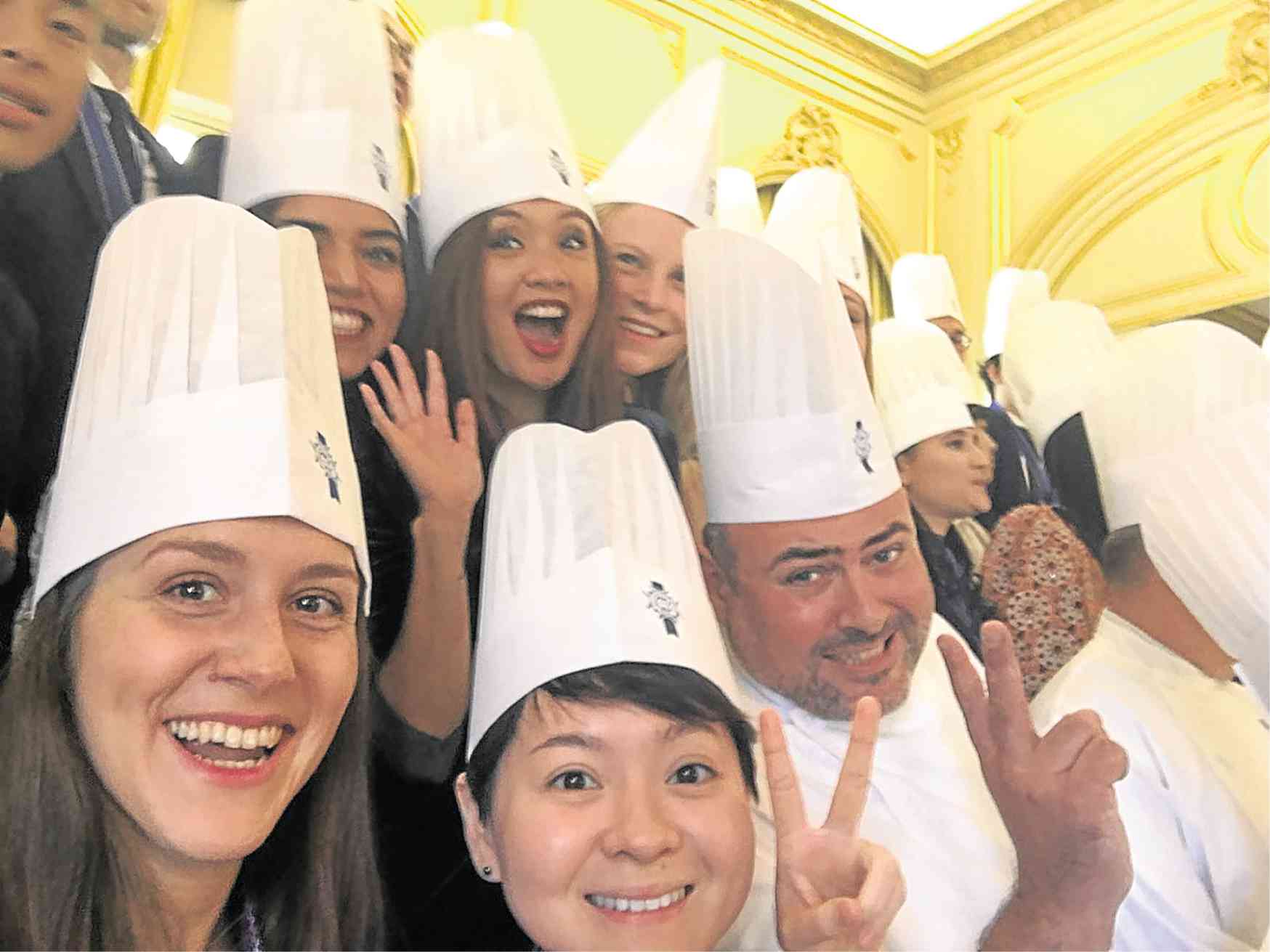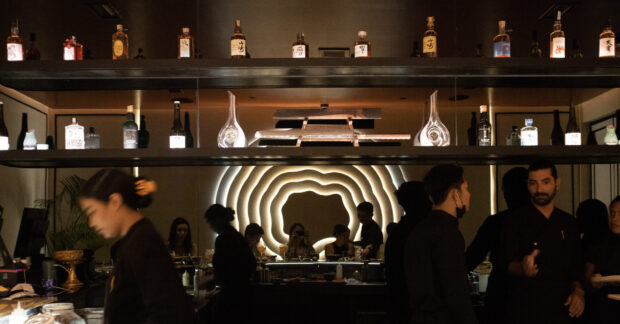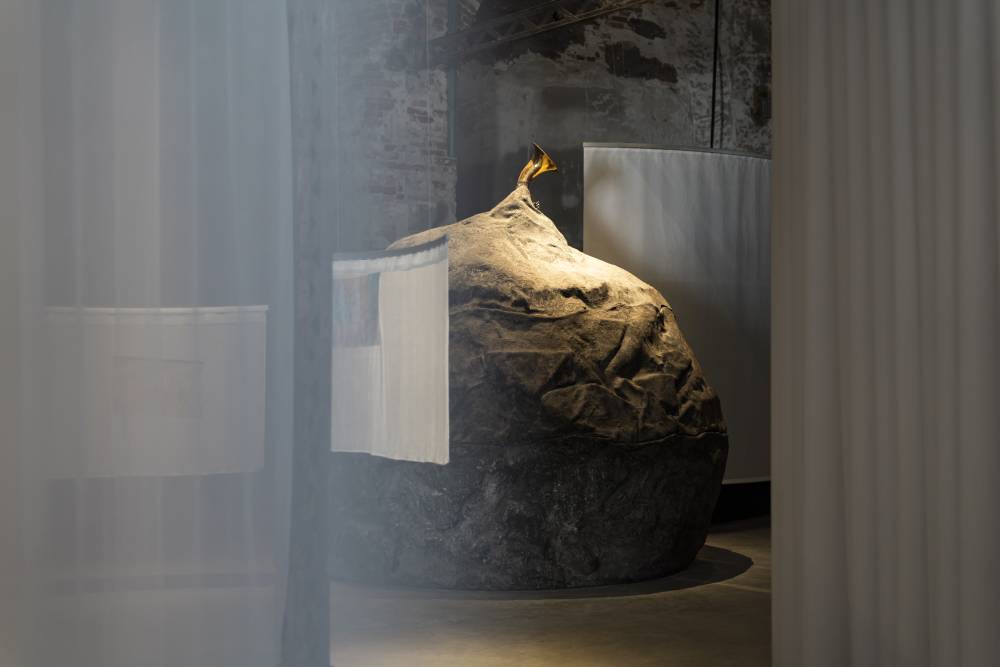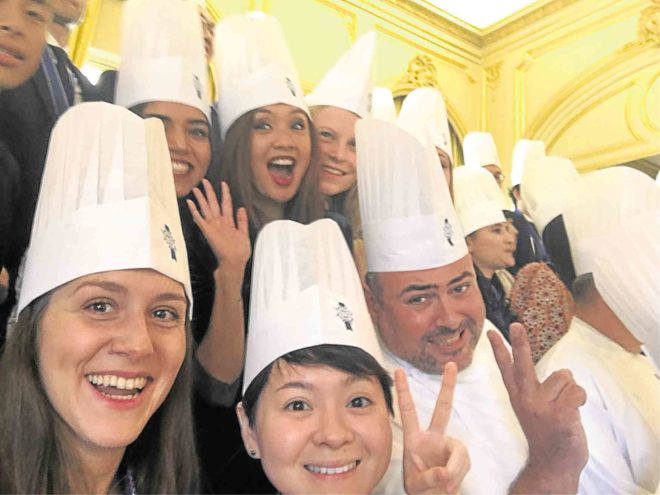
PARIS—To chase my lifelong dream of going to culinary school and eventually switching careers:
In 2015, I decided it was now or never—I could let this dream go and continue cooking on the side for fun, or I could answer the call of this relentless obsession and go for it.
Before I knew it, I was in my uniform on the first day of school at Le Cordon Bleu. Like any other skill you may have a knack for, you find your views completely changing and evolving after learning the techniques and rules. I may have been in my mid-30s, but the decision to go back to school and learn a new skill made me a candidate to be a successful student.
At Le Cordon Bleu, I sharpened my creativity, learned the skills I needed to work in a more methodical and hygienic manner, and practice time management.
At our practical sessions in the kitchen, I felt stress—it was hot, we were under time pressure, and we sometimes had to work with people we didn’t necessarily liked.
But this would be just a little taste of “the real world.”
For the full diploma courses at Le Cordon Bleu, you do internship. It is, for the most part, unpaid, unless you get a contract.
For a fresh culinary grad, it seemed like the chance of a lifetime to work in a Parisian kitchen, and also like willingly walking into slave labor. I did my internship about four months later than my peers because I decided to do an extra Basic Pastry Certificate course before throwing myself into the fire. So I had time to think about where I would initially spend my professional kitchen experience.
I was weighing out the pros and cons of going Michelin, applying in a smaller restaurant, or working in one outside Paris.
The one restaurant that kept resurfacing on my list was L’Atelier de Joel Robuchon. I was warned about how tough certain kitchens were and this was on that list. But even if I had no intention of working long-term in a kitchen, I applied for it. I thought that the stress, discipline, and pressure would be good for me in the long run.
First day
Fast forward to the day before my first day at L’Atelier de Joel Robuchon. I was assigned to the one in Etoile, by the Arc de Triomphe, so I expected it to be busy. I was nervous. I had been working for 16 years, but this was a completely different industry, in a country where my language skills were still not there yet, in a restaurant by one of the biggest names in the industry, awarded stars by the most prestigious committee in the food world.
I literally stopped in my tracks before entering the restaurant, asking myself what on earth I was doing there. In the interview, I was told by my future boss, chef Melanie Serre, to be in the restaurant by 9 a.m.
On my first day, I thought I would be asked to do a bunch of menial tasks and a lot of cleaning. At Robuchon, the kitchen is cleaned at least three times a day—once before lunch break, and then after lunch service, and just before dinner service. (Interns normally leave right before dinner service, so I’m sure there’s a fourth time at the end of the day.)
To my surprise, I was asked right away to prep plates at the Entremetier, or hot starters and vegetable section, and, later that day, prep lobsters for dinner service. I was so scared of making mistakes, that on the first few days I felt like I was slow to do anything because I wanted things to be perfect. Some of the people I worked with did not speak English and spoke only minimal French, so a lot of things were lost in translation.
Everyone was extremely focused that you saw their real personalities only during the break. They were all nice, but in the kitchen, it was about attaining perfection as quick as you possibly could.
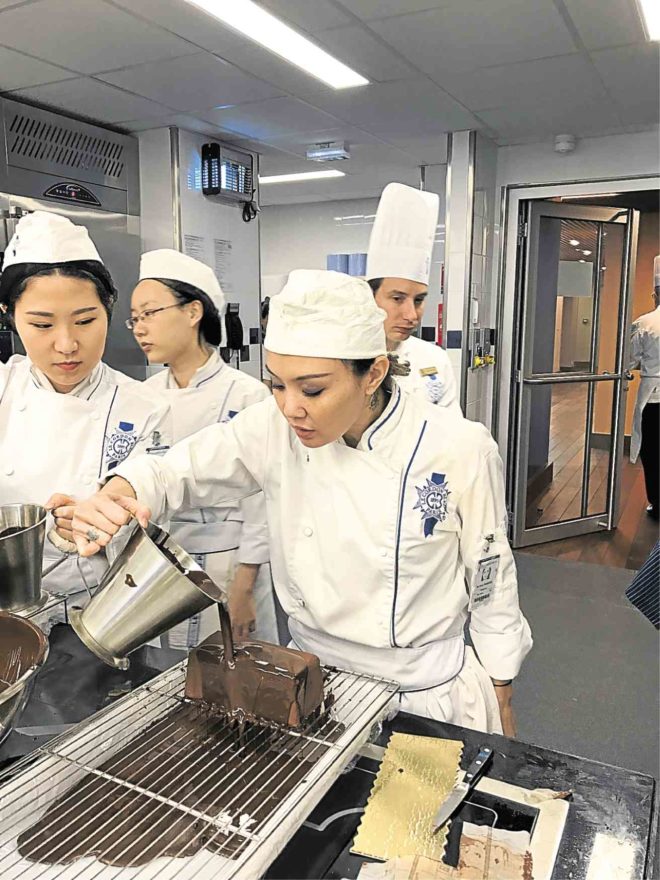
Daily drills
As the days went by, I started getting used to the daily and weekly drills. Every Monday we would do a cleaning of the Chambre Froid, the big fridge where we kept most of what we needed in the kitchen such as meats, fish, vegetables and fruits, as well as stocks and sauces. We had to take everything out, hose the ref down, scrub the shelves, walls and floors, dry everything and put the things back in the same places.
We likewise had to do the same for the Pantry and the Asian Pantry. This was aside from our daily cleanings. Every couple of weeks, we did a major cleaning and scrub everything including the backs of refrigerators, the insides of ovens, and every nook and cranny of the kitchen.
There were days I didn’t think I could survive another day with my 38-year-old body.
Oftentimes, while peeling three huge crates of potatoes and slicing them into uniformly sized fries, or while cleaning and accidentally getting dirty water in my eye or, worse, in my mouth, or when I had to pick through two kilos of roquette leaves to separate small, medium and large leaves, I would ask myself what I was doing with my life and why anyone in their right mind would choose this over the VIP trips and events, editorials and working from home which I enjoyed.
But every time I felt close to stabbing myself with a knife, I would ask myself, “Do you want to just go back to your old life?” The answer was always a resounding “no.”
Once in a while, Mr. Robuchon’s visit would be the highlight of my week—the food I was prepping, cooking or plating would end up in front of one of the greatest chefs of our time.
Toxic environment
People often ask me if the things they see on kitchen shows are real—people yelling, calling each other names, the meltdowns and accidents in the kitchen. The answer is yes.
The professional kitchen is a toxic work environment, not for the faint-hearted. You will be screamed at at least once in your life, you may be called names in the heat of the moment, and you may even have a plate thrown in your general direction.
In another restaurant I worked in after my internship, an all-day dining establishment owned by a star chef, I was yelled at by the chef for not plating something properly, before he slammed the plate on the counter and redid it exactly like the plate I did.
The pressure one feels in the kitchen is definitely passed around, and you just learn to say “Oui, chef,” and get on with your day. There is a hierarchy in the kitchen, and unlike other professions where diplomacy is expected, here people will make sure you never forget your place.
I started late in the game, and to be honest, my reasons for going to culinary school were far less ambitious than what I ended up experiencing after getting my diploma. If you are planning to get into this industry because you think you will be some sort of rock star like you see on television, I suggest you do not quit your day job.
Are you ready for 14-16-hour days on your feet—hardly be able to walk because your feet and back hurt, and to wake up in the middle of the night because your fingers are cramping?
Are you ready to do the same thing over and over and over every single day?
If not, think of another way to incorporate your love for food into your life.
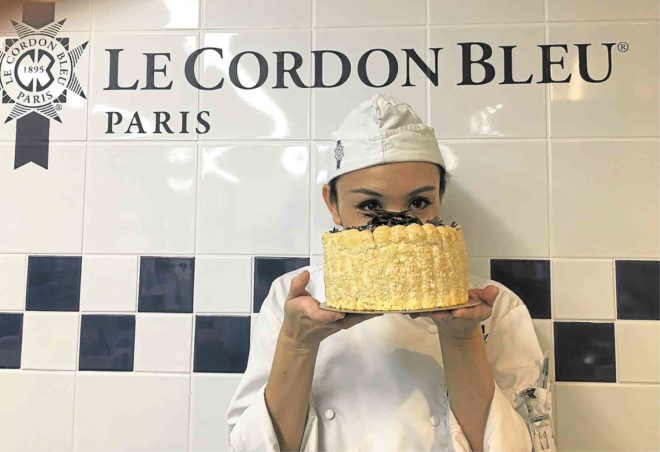
Blood, sweat, tears
To succeed, you must cook because it’s your passion. Many things about the food business will make you wonder if you had made the right decision. It’s a lot of blood, sweat and tears—and I mean this also in the literal sense.
I once had to use this very blunt mandolin, a kitchen tool that allows for even slicing of fruits and vegetables. I kept insisting that I manually slice because I knew this was an accident waiting to happen, but my higher-up vetoed my request.
Sure enough, two days after I kept complaining (and being ignored) about the mandolin, I cut myself so badly, my hand did not stop bleeding for four hours until I got five stitches, and was given a certificate by the doctor to stay out of the kitchen for 10 days because I could not hold a knife properly.
The whole time I was interning, and later on working in the kitchen, I would come home with burns, mini-cuts and bruises, and unable to remember where they all came from. Ask any cook who works on the line and they will tell you the same.
Don’t get me wrong, the camaraderie in the kitchen feels great, because you are all in this ship together. It is a complicated love-hate relationship and teamwork is a must. If one person falls, there must be someone to catch him or the entire crew will sink. It is a place for discipline, being proactive and independent while acknowledging that you are part of a team.
Revisiting goals
After experiencing the rigid work environment of the kitchen, I had to revisit my initial goals, consider my age and physical capabilities, and decide if I wanted to continue this journey. I had to consider that I’m a single mother with a young daughter who needs my time and attention.
I have always liked the idea of good meals bringing people together, and my goal was to bring happiness to people through my passion, while continuing to love what I was doing. I decided to move in another direction that was more in line with what I came here to do.
I am hosting my own private dinners, catering, and creating my own recipes and recipe testing for future reference—a cook book, my own small and simple establishment.
Even if I realized that professional kitchen life as a long-term plan won’t work for me, I felt glad I experienced it. I am thankful for the lessons the French kitchens and French chefs have taught me, and will continue to keep them with me as I grow in my own way as a cook. –CONTRIBUTED
Chicken Tinola Consomme
I’ve been testing a lot of French-Filipino fusion recipes—French technique combined with Filipino flavors. Here’s my recipe for Chicken Tinola Consomme, a clarified broth typical on French menus with the distinct flavor of tinolang manok. I have served this with chicken quenelles and diced potatoes, but serve it with any garnish you like.
For the broth:
Chicken bones, or wings, chopped up
1 onion, roughly chopped
1 carrot, roughly chopped
1 celery stalk, roughly chopped
2 stalks lemongrass
1 thumb-size piece of ginger
1 handful of parsley
1.5 L of water or enough that all ingredients are covered in liquid.
Fish sauce, to taste
For the consommé:
Broth
3 egg whites
1. Caramelize your chicken bones or wings in a heavy stock pot.
2. Remove and caramelize your carrots, celery and onion in the same pot.
3. Drain out oil and add lemongrass and ginger. Remember to bruise the white part of your lemongrass to bring out the flavor. Add parsley.
4. Add chicken and deglaze with dry white wine or just plain water.
5. Add 1.5 L of water and bring to boil and then lower to a gentle simmer for an hour, remembering to add water when needed.
6. Remove from heat and allow to cool, then put in the refrigerator for an hour.
7. Remove from refrigerator and skim off fat from the surface.
8. Whisk in the three egg whites and bring to boil while whisking. The egg whites will coagulate and rise to the surface, bringing up with it all other impurities.
9. Carefully ladle clarified stock into a sieve topped with a muslin cloth. Do not push down or your consommé will be cloudy.
10. You should have a clear broth with a distinct chicken tinola taste. Serve hot but not boiling with your choice of garnish, or cool down and store in the fridge up to three days before use.

